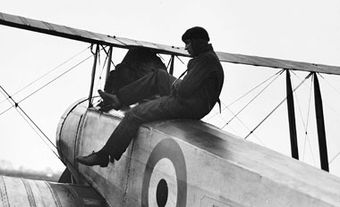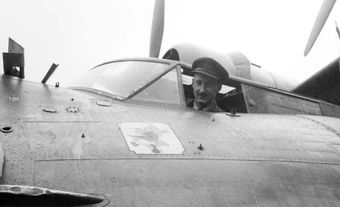Francis de Rottenburg
Baron Francis de Rottenburg, soldier, military figure in the WAR OF 1812 (b at Danzig [now Gdansk], Poland, 4 Nov 1757; d at Portsmouth, England, 24 Apr 1832). Francis de Rottenburg was the son of Franz Rottenburg, a merchant and landowner. The junior Rottenburg served in the French army 1782-1791, during which time he acted as aide-de-camp (ADC) to Baron de Salis, French envoy to Naples. Rottenburg left the French army as the Revolution was gaining momentum and went to Poland.
Rottenburg's Service Around the World
He commanded an infantry battalion in the revolt against Russian rule, but the revolt was defeated in November 1794. He then joined the British army in 1795, becoming a major in Baron Carl von Hompesch's regiment of hussars. In 1796 he was promoted to lieutenant colonel and helped to raise Hompesch's Fusiliers, which was absorbed into the 60th Foot as the 5th Battalion. Rottenburg commanded the battalion in Ireland during the rebellion of 1798 and subsequently in the West Indies. In 1799 the British War Office published Rottenburg's Regulations for the Exercise of Riflemen and Light Infantry, and Instructions for their Conduct in the Field, which had been issued in German the previous year. He may have been instrumental in the creation of the first British rifle regiment because of his early and informed interest in riflemen. (A second edition of his book was published in 1803, which Major General John Moore used for training his light infantry.)
In 1805, Rottenburg was promoted to colonel. In 1808, he gained command of a brigade of light infantry, and the next year commanded it in the expedition to Walcheren Island in an attempt to capture Amsterdam.
Rottenburg had been appointed brigadier general to the North American staff in 1808 but did not go to Québec until 1810. That year he was promoted to major general and arrived at Québec in September to command its garrison, his extensive combat experience as well as his fluency in French contributing to his promotion.
Rottenburg in the War of 1812
In July 1812, Rottenburg was put in command of the Montréal District. This was an important post because of its location on the St Lawrence River and its close proximity to the American border. When in June 1813 Governor-in-Chief Sir George PREVOST decided to replace Major General Roger SHEAFFE as administrator and commander of the forces in UPPER CANADA, he turned to Rottenburg, who was the senior general officer in the colony and had both administrative and combat experience. Prevost was in the upper province until September so, until he departed, Rottenburg did not take full command. Rottenburg's main concern was to preserve the army, and he was prepared to withdraw his forces to Kingston if Sir James YEO lost naval control of Lake Ontario.
Nevertheless, Rottenburg ordered probing attacks against the American occupiers of FORT GEORGE and the town of Niagara as well as raids across the Niagara River. He was criticized for refusing to send as many troops as Major General Henry PROCTER expected to enable him to attack the American naval base (Presque Îsle) on Lake Erie. Upper Canada's security came under great threat from two significant American victories: Captain Oliver PERRY's on Lake Erie and Major General William Harrison's at Moraviantown over Procter and TECUMSEH. These opened the western part of Upper Canada to raids by American forces that caused widespread destruction to homes, farms and mills. As well, in other parts of the province, spies and marauders acted more boldly and desertions from the militia increased.
Observing the movement of American troops eastward from the Niagara region, Rottenburg moved to Kingston, a potential target for an American attack. By early November he knew an American army was proceeding down the St Lawrence River against Montréal and he ordered Lieutenant Colonel Joseph MORRISON to pursue the invaders. (Morrison would defeat part of the army at CRYSLER'S FARM.) By this time, Rottenburg knew he was to be replaced by Lieutenant General Gordon DRUMMOND in command of Upper Canada.
Rottenburg was civil administrator of Upper Canada but unlike his predecessors (Isaac BROCK, Sheaffe) and successor (Drummond), he did not call a session of the legislature. He relied for advice on a few appointed officials and governed through the appointed Executive Council. He imposed partial martial law in the Johnstown and Eastern districts in order to force farmers to provide food and forage to the army, the first use of the authoritarian measure in the province. The action was highly unpopular and early in 1814 it was declared by the assembly (which had not been consulted by Rottenburg) as "an arbitrary and unconstitutional measure."
Rottenburg had returned in December to LOWER CANADA and was given responsibility for the defence of Montréal. In September, he was given command of 3 brigades, which made him second in command to Prevost when he invaded New York State. Rottenburg played no conspicuous part in the BATTLE OF PLATTSBURGH, with the result that he was not touched by the chorus of criticism that descended on Prevost.
Rottenburg Post-War
Francis de Rottenburg remained in Lower Canada until July 1815 when he returned to England. During the war he took part in no major battles and seems to have left little impression on the public memory. He was appointed to the Royal Hanoverian Order as a knight commander in 1817 and a knight bachelor in 1818. (The Order was created in 1815 by the Prince Regent, later King George IV, to honour soldiers for service to Great Britain and to Hanover.) He became a lieutenant general by seniority in August 1819.

 Share on Facebook
Share on Facebook Share on X
Share on X Share by Email
Share by Email Share on Google Classroom
Share on Google Classroom


